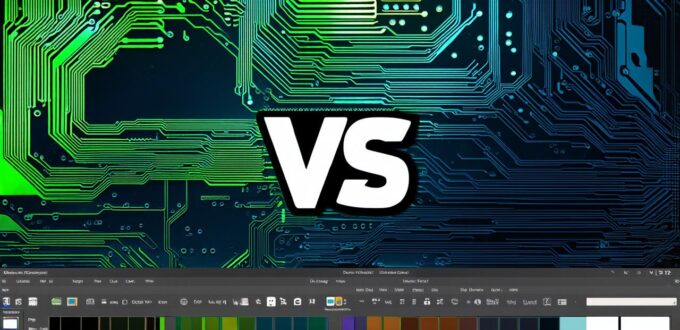When it comes to software development, there are several different tools and technologies that can be used. Two of the most common types of software are platforms and software. While these terms may sound similar, they actually refer to two very different things. In this article, we will explore the key differences between platforms and software and discuss how they relate to software development.
What is Platform?
A platform is a collection of tools and technologies that are designed to make it easier for developers to create and deploy applications. These tools may include programming languages, development frameworks, operating systems, and other software libraries and components. Platforms typically provide a wide range of features and capabilities that are designed to support the creation and deployment of various types of applications.
One of the key advantages of using platforms is that they allow developers to focus on the core functionality of their application, rather than having to worry about building and managing all of the underlying infrastructure. Platforms can help streamline the development process by providing pre-built components and tools that can be used to build applications quickly and efficiently.
Some examples of popular platforms include the iOS and Android operating systems, Microsoft’s .NET framework, and Google’s Google Cloud Platform.
What is Software?
Software, on the other hand, refers to a set of instructions or rules that are used by a computer to perform specific tasks. Software can be written in various programming languages and can take many different forms. Some examples of software include operating systems, applications, and scripting languages.
Unlike platforms, which provide a wide range of tools and technologies for developers to use, software is typically more focused on performing specific tasks or functions. Software may be designed for a particular operating system or platform, or it may be compatible with multiple platforms.
The Key Differences between Platforms and Software
Now that we have defined both platforms and software, let’s explore some of the key differences between these two concepts.
1. Purpose
One of the main differences between platforms and software is their purpose. Platforms are designed to make it easier for developers to build and deploy applications, while software is designed to perform specific tasks or functions.
2. Features and Capabilities

Another key difference between platforms and software is the range of features and capabilities that they offer. Platforms typically provide a wide range of tools and technologies that are designed to support the creation and deployment of various types of applications, while software may have more limited functionality.
3. Compatibility
Platforms and software can also differ in terms of their compatibility with different operating systems and other software. Platforms are typically designed to be compatible with multiple platforms, while software may only work on specific platforms or operating systems.
4. Development Requirements
Developing for a platform versus developing software can also require different skill sets and development tools. Developing for a platform may require knowledge of specific programming languages and frameworks, while developing software may require a deeper understanding of the underlying operating system and other software components.
Case Studies: Understanding Platforms and Software in Action
To help illustrate the differences between platforms and software, let’s look at some real-life examples of each.
1. Developing for iOS
Developing an application for the iOS operating system is a great example of working with a platform. The iOS platform provides developers with a wide range of tools and technologies, including Swift and Objective-C programming languages, Xcode development framework, and various libraries and components. These tools make it easy for developers to build and deploy applications that can run on a wide range of devices, from smartphones and tablets to wearables and other devices.
울론
2. Building a Content Management System (CMS)
Building a CMS is an example of developing software. A CMS is a set of instructions or rules that are used by a computer to manage and organize content on a website. The software for a CMS can be written in various programming languages, such as PHP or Python, and may use various libraries and components depending on the platform it is designed to run on.
Using Platforms and Software: Best Practices for Software Developers
Now that we have a better understanding of platforms and software, let’s look at some best practices for using these tools in software development.
1. Choose the Right Tools for the Job
When working with platforms and software, it’s important to choose the right tools for the job. This means selecting the appropriate programming languages, frameworks, and libraries based on the needs of your project.
2. Keep Up with Platform and Software Updates
Platforms and software are constantly evolving, so it’s important to keep up with updates and changes as they occur. Staying current with these updates can help ensure that your applications continue to work as expected and take advantage of new features and capabilities.
3. Follow Best Practices for Development
Following best practices for development, such as writing clean and modular code and using version control, can help make it easier to work with platforms and software and ensure that your applications are robust and reliable.
Summary: Understanding the Differences between Platforms and Software
In conclusion, understanding the key differences between platforms and software is essential for any software developer. By knowing when to use each tool and how to effectively develop for each platform, you can create high-quality applications that are optimized for performance and user experience. So, next time you’re working on a new project, take some time to consider the specific needs of your project and choose the right tools for the job. With the right knowledge and approach, you can create truly exceptional software that will stand out from the rest.
